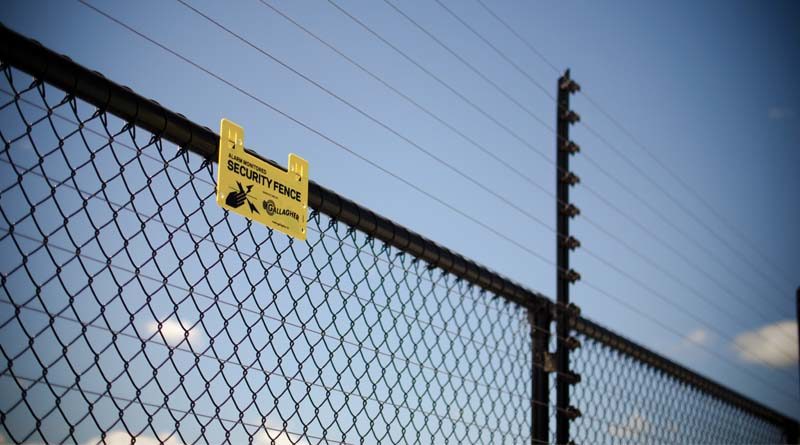Rethinking Perimeter Protection
By CN Staff
Perimeter Product Manager for Gallagher, Dave Solly, recently shared some thoughts with CN on the vitally crucial perimeter protection aspect of corrections security.
After just under 10 years with Gallagher, Solly has an extensive understanding of the unique security challenges of customer sites and the importance of intelligent, integrated perimeter security solutions.
What is the greatest current challenge with perimeter protection, and how is Gallagher helping facilities face that threat?
The value of perimeter security is often underestimated, which results in organizations opting for substitute technologies, rather than using the right technology for the right application. This is less prevalent for critical sites, such as correctional facilities, where the risk of someone breaching the perimeter line is a very real consideration.
However, with high levels of risk adversity comes the hesitation to adopt new technologies. Cybersecurity threats are becoming a very real threat to perimeter protection and is forcing a rethink in how and what technologies are installed, with a shift toward more intelligent and integrated solutions.
Perimeter protection acts as the first line of defense for an overall security system, and when considering the cyber protection of these systems an end-to-end approach is vital. A cybersecurity vulnerability can occur along any of the communication channels, from the fence detector, right through to the device that displays the alarm to the security guard.
Gallagher considers each communication link and device to assure the complete security of a perimeter protection system. Our security solutions are engineered to meet stringent standards that define how high security sites around the world should be protected and are backed by the implementation of government standards to validate their effectiveness. We regularly undertake internal and external penetration testing of our products to ensure they are hardened and secure to mitigate the risk of cyber-attacks.
From a technological aspect, what do you think has been the greatest recent advancement with perimeter security?
Historically, perimeter protection systems have been completely independent of a sites internal security system, leading to disparate systems in the control room that are not designed to work together.
In recent years, we have seen a shift to intelligent, integrated perimeter solutions where detailed reporting and configuration can be carried out on the performance of the perimeter technology. By integrating all systems into a single security management system, like that of Gallagher’s Command Centre, operators are trained on one application, with a single point for reporting on detail such as fence voltage levels, operator use statistics, or specific zone alarm data – saving time, creating operational efficiencies, and reducing cost. An integrated approach provides the control room operator with all the information associated with an attempted attack to their fence line, ultimately assisting with faster response times.
What do you think is the key to success when it comes to seamless perimeter security?
No matter the site, for Gallagher, success lies in understanding and meeting the needs of our customers. As a vertically integrated company we design and manufacture our own products, which allows us to adapt our perimeter technology to ensure our customers get the best solution.
There are many factors that contribute to the performance of a perimeter security solution, ranging from environmental, through to site requirements for a high degree of redundancy – all of which can have differing effects depending on the technology used.
The main requirement from customers when it comes to an intelligent perimeter is a high probability of detection and low false alarm rate. For sites requiring higher levels of perimeter protection, like prisons, it is crucial that perimeter security is as sensitive to tampering on the fence line as possible to prevent and detect perimeter breaches. However, a highly sensitive fence line can be subject to false alarms due to factors such as disturbances from wildlife and environmental extremes.
To help organizations operating in harsh environments, Gallagher have introduced an innovative new feature, Adaptive Thresholds, within their Command Centre security management system. This feature allows Gallagher’s Monitored Pulse Fence System to adapt dynamically to environmental changes which cause fluctuations in voltage on the fence line. Through the application of Adaptive Thresholds, sites can reduce false alarms while still ensuring unsurpassed sensitivity for a highly secure perimeter.
How has the pandemic impacted correctional/perimeter security—and your firm’s approach, if at all?
Throughout the COVID-19 pandemic, Gallagher have continued to provide perimeter security solutions to our global customer network to ensure their people and assets remain protected. Our intelligent deterrent and detection technologies continue to be utilized across small to medium commercial and industrial facilities, right through to larger correctional, utility, and high-profile government sites.
While the protection of property continues to be a serious factor, the protection of people has been an important part of Gallagher’s pandemic response. We have amplified our development plans and investment strategies and created award-winning solutions like our Proximity and Contact Tracing Report which enables organizations to quickly and accurately identify where a specified person has been on site through fast and effective contact tracing.
To find out more about Gallagher’s inspired security solutions visit https://security.gallagher.com.
Editor’s Note: This feature originally appeared in the May/June issue of Correctional News.

